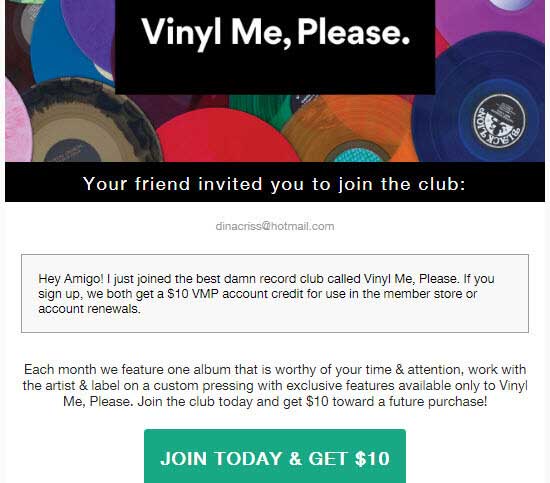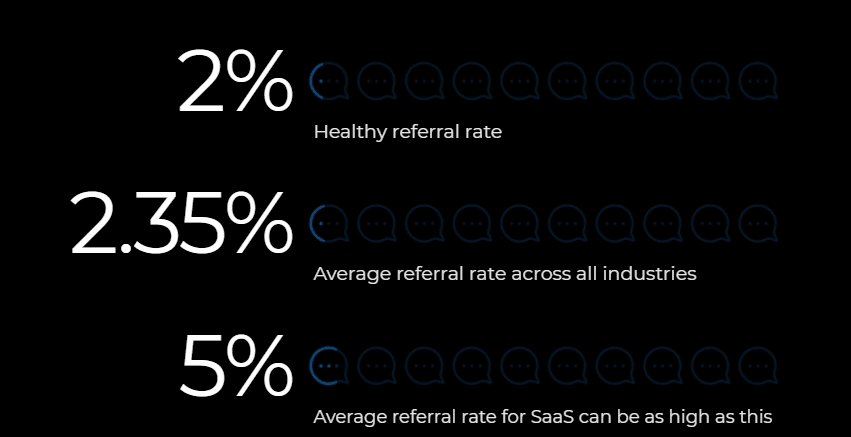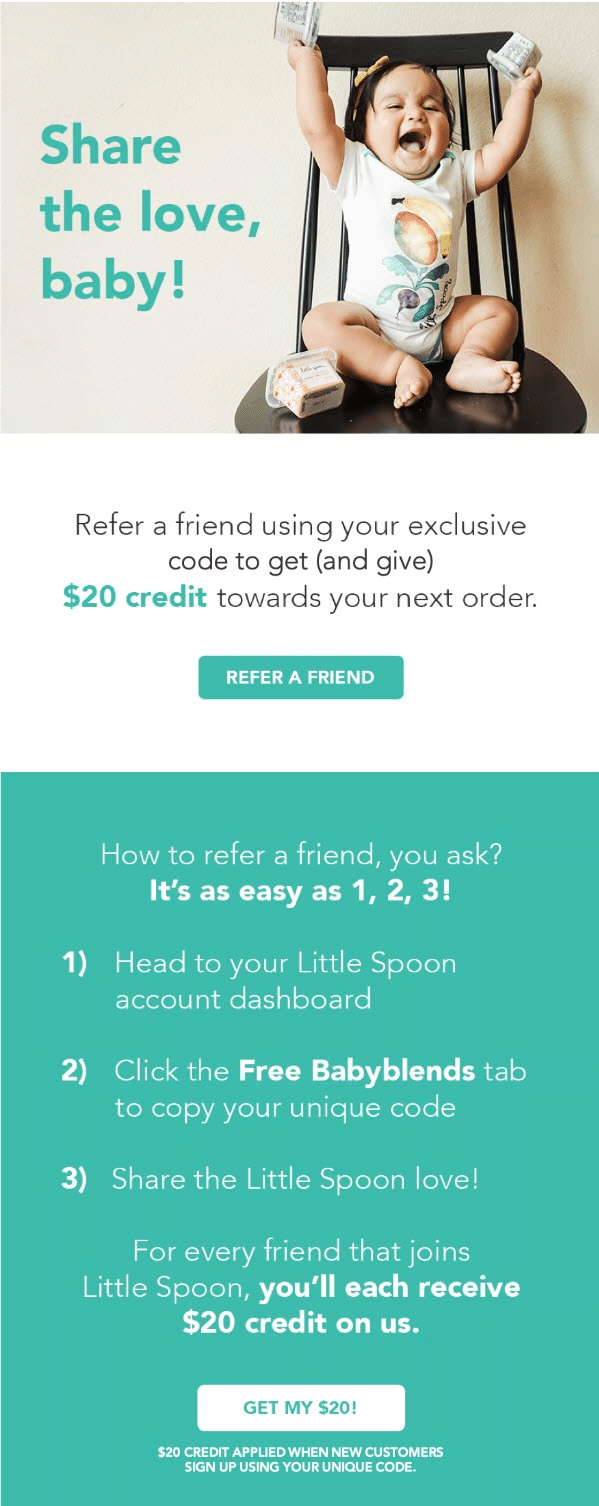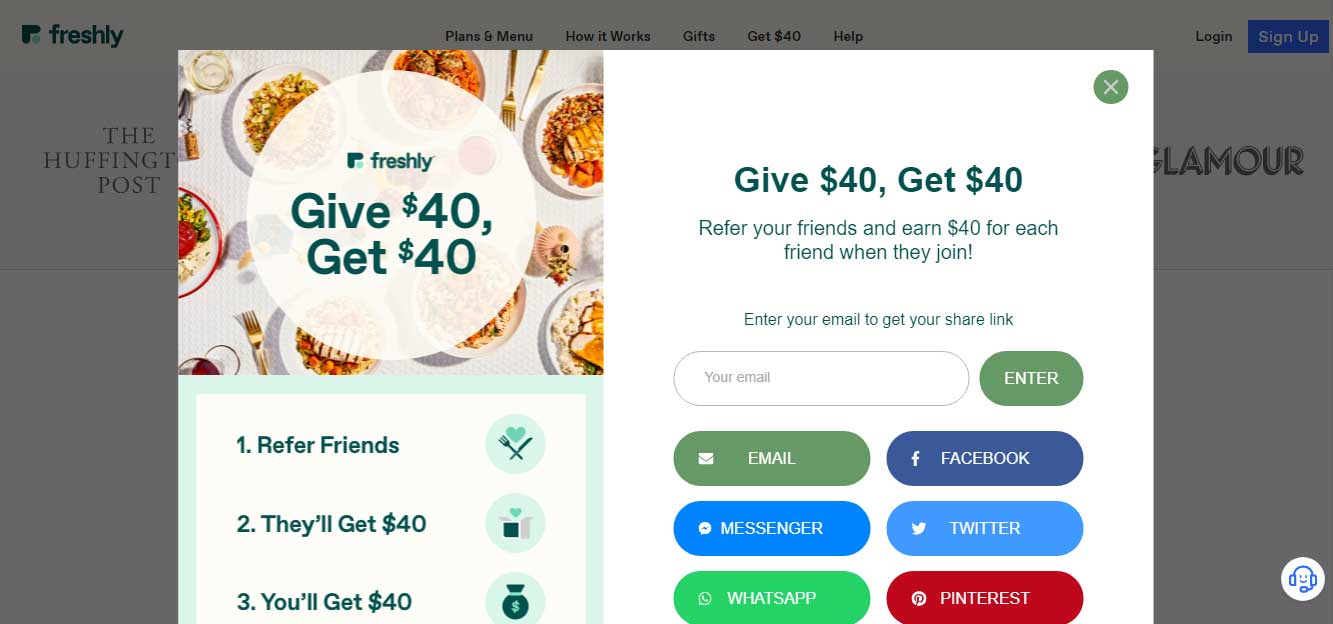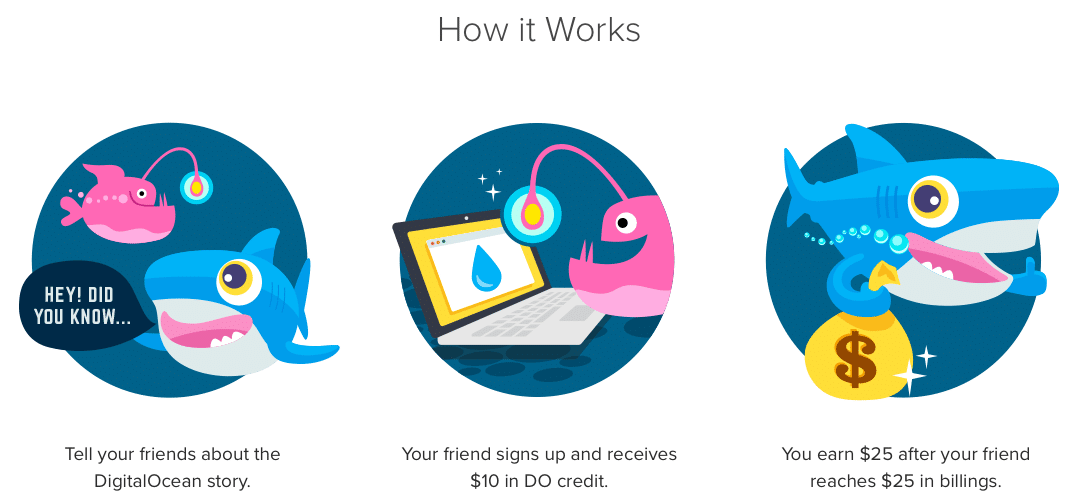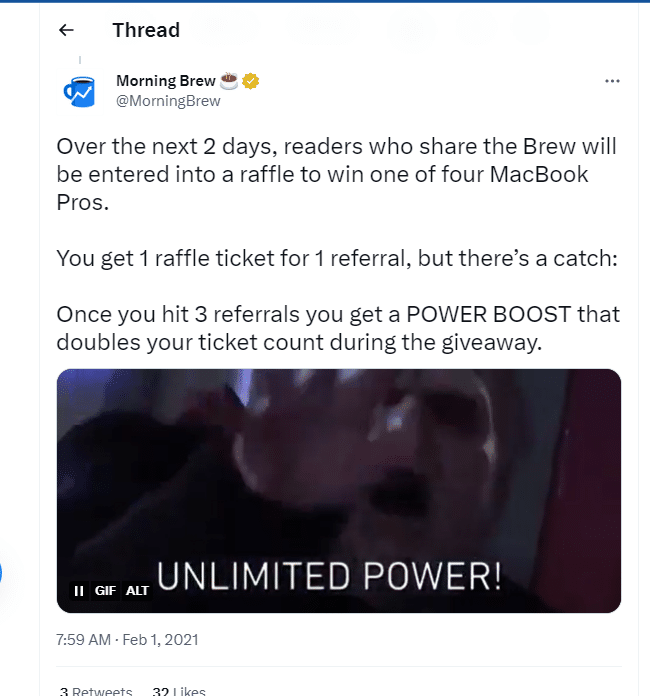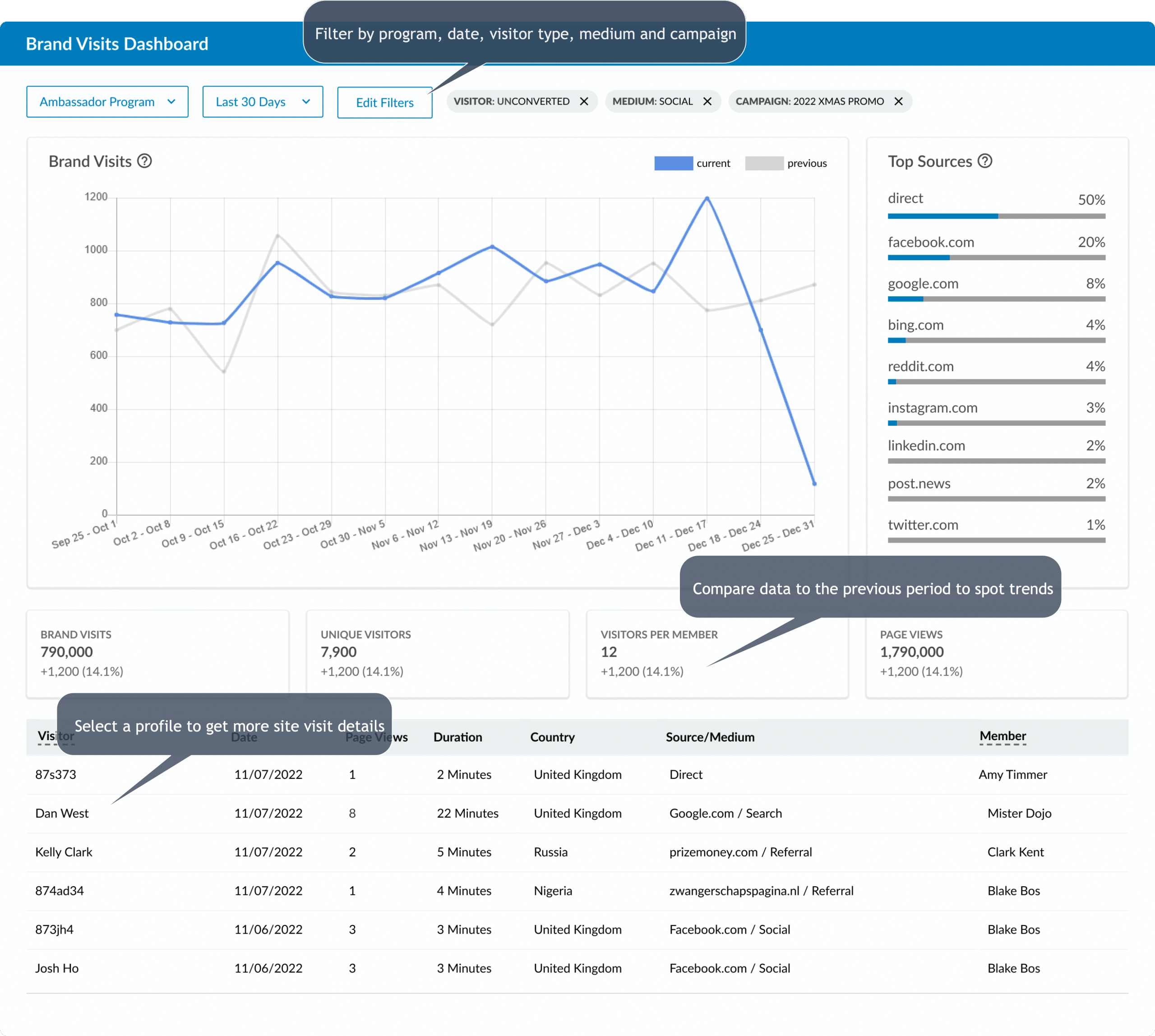How to measure the success of your referral program? Here are our recommendations for the referral program metrics you should track, including how to measure them and why they’re so powerful. Plus, we’ve rounded up our expert tips for improving each metric. Let’s dive in.
1. Conversion rate
The conversion rate tracks the percentage of referred leads who end up purchasing your product or service.
Why is this important?
Conversion rates track how successfully your referral program is driving purchases. If you’re getting a lot of shares but your conversion rate is low, you might need to rethink the rewards or messaging sent to the referral.
How to measure conversion rate?
Find the percentage of referred leads that end up purchasing from you. Divide the number of referred customers (who made a purchase) by the number of all referred leads. Then, multiply by 100.
(Referred customers ÷ all referred leads) x 100 = conversion rate
How to improve it?
Make sure you’re offering a reward to the referred friend, to encourage them to purchase. You might also refine the messaging that you send to the referred friend, to make sure the values and USPs of your product are clear.
2. Referral rates
The referral rate tracks the percentage of all purchases that result from referrals. Usually, this rate is calculated per month or year.
Why is this important?
How well is your referral program bringing in customers? By checking your referral rate, you’re able to see how much the program contributes to your overall customer acquisition.
How to measure referral rates?
First, figure out how many purchases have come from referrals over a set time period (e.g. a month, quarter, or year). Once you have that number, divide it by the total number of purchases within that same time period. This will give you the overall referral rate over that period.
(Number of referred purchases ÷ number of total purchases) x 100 = referral rate
How to improve them?
Create an attractive double-sided reward scheme that awards both the referrer and friend when the friend makes their first purchase.
Also, optimize your referral program promotions, to increase the odds that customers will act on the promotion and refer their friends. Make sure promotions cover what you want customers to do (share) and what’s in it for them (the reward).
And on the friend’s end, carefully craft a referral message from the referrer that lays out the merits of purchasing.
3. Referral revenue
Referral revenue is the total amount of revenue brought in through your referral program. Calculate this monthly, quarterly, annually, or over the entire lifetime of the program.
Why is this important?
Referral revenue lets you know just how much money your referral program is generating. Knowing your referral revenue is also an important step in checking your program ROI.
How to measure referral revenue?
Simply add up the value of all the purchases that referred customers made in a given time period.
(It’s up to you whether you include repeat purchases made by referred customers.)
How to improve it?
Use double-sided rewards to motivate customers to refer and encourage their referred friends to complete a purchase. Make referring as simple as possible, and promote your program via a variety of channels.
It’s also a good idea to incorporate social media sharing into your program, as customers will be able to share with many friends at once (and increase the odds of a conversion).
4. Referral program ROI
Your program’s ROI is the revenue it brings in minus the costs of running the program and rewarding your customers. Like referral revenue, you can measure it over a given time period, and/or over the lifetime of your program.
Why is this important?
Your ROI shows whether your referral program is truly profitable, once your customer acquisition costs are factored in. Do you need to adjust your rewards, messaging, or other factors for better results and more sustainability for your business?
How to measure referral program ROI?
Add up all the purchases that referred customers made in a given time period (this is your gross referral revenue). Then, subtract your customer acquisition costs – the costs of referral rewards and referral software within that time period.
Referral revenue – referred customer acquisition cost = ROI
How to improve it?
Any strategy that improves referral revenue will work well to improve ROI. In particular, though, make sure your rewards are both motivating to customers and cost-effective for your brand.
5. Share rate
The share rate, or participation rate, is the percentage of customers who use your referral program to share with friends in a given time period.
Why is this important?
Share rate shows how engaged customers are with your referral program. Do you have lots of customers who share – and keep sharing? And of course, the more customers who are sharing, the more revenue you stand to bring in.
How to measure share rate?
Divide the number of customers who have shared your business (via the referral program) in a given period by your number of total customers.
How to improve it?
Make the sharing process easy by explaining it in 3-4 simple steps.
Promote your program on a variety of channels, so customers know about it. And make sure your rewards are motivating for customers! You might try a contest or gamified reward structure to increase engagement.
6. Average purchase value
The average purchase value measures the average amount referred customers spend in a single transaction.
Why is this important?
Do referred customers spend more on average? Compare the average purchase value from referrals to the average purchase value from other sources to find out.
How to measure average purchase value?
Add up all the revenue from your referral program in a given time period. Then, divide that by the number of purchases made through the program.
How to improve it?
Try offering a discount or store credit reward to the referred friend.
7. Average referral value
The average referral value factors in both average purchase value and how long a referred customer stays loyal on average.
Why is this important?
Average referral value shows you the average impact of a referral on your business, in terms of their customer loyalty.
How to measure average referral value?
Multiply the average order value of referred customers by the average number of years referred customers stay loyal. Then, subtract the average cost of the referral incentive.
[Average order value of referred customers x average # years referred customers stay loyal] – average cost of referral incentive = average referral value
How to improve it?
If your product is purchased frequently, or you operate a subscription model, offer double-sided rewards that connect back to your brand. This way, the referred friend is incentivized to make a high-value purchase. And if they refer more friends, they’ll get an additional brand-focused reward that encourages them to make more purchases.
8. Customer lifetime value
Customer lifetime value shows the average value of your customers – particularly referred customers – across their entire lifecycle.
Why is this important?
Referred customers tend to be more loyal than other customers. This means they often have a higher average customer lifetime value than customers acquired by other means.
Comparing the customer lifetime value of referrals to that of non-referred customers – and to your overall average customer lifetime value – is a great way to prove the impact of your referral program.
You can also use this metric to compare your overall customer lifetime value before and after starting the referral program.
How to measure customer lifetime value?
- Multiply the average order value by the average annual purchase frequency
- Subtract the average customer acquisition cost – now you know the average customer value
- Multiply the average customer value by the average number of years someone remains a customer – this gives you customer lifetime value
Customer lifetime value = average customer value x average number of years customers stay
How to improve it?
Referral programs improve your overall customer lifetime value. Optimizing your double-sided rewards, promoting your program on several channels, and creating a compelling message from the advocate that builds trust can all contribute to a higher customer lifetime value.
9. Top advocate metrics
Your top advocates are the referral program participants who have brought in the most new business for your brand, and the most revenue.
Why is this important?
Your top advocates are your super-sharers. They’re driving the biggest impact for your brand by creating repeated word-of-mouth. You might consider giving them extra rewards to recognize their efforts, or even recruiting some of them as more formalized brand ambassadors.
How to measure top advocates?
Check your referral dashboard to find the advocates who have made the highest numbers of successful referrals. Or, see which advocates have helped you bring in the most revenue in total. How much revenue are these advocates responsible for on their own?
How to improve it?
To create more super-sharers – and further mobilize your current top advocates – try creating a “most referrals” contest with a leaderboard and added valuable prizes. Then, give a prize to the best advocates in each given month or quarter.
10. Brand awareness (referral visits)
Leading referral program software will measure referral visits, which track the brand awareness your referral program generates. Referral visits track the clicks on referral links that lead to your website or landing page.
Why is this important?
Even if referred leads don’t purchase right away, they are still exposed to your brand when they click the link their friend sends them. Often, this is their first exposure to your brand. Now that they know what your brand can help with, they still might come back and purchase later.
How to measure referral visits?
Only some referral software programs will track referral visits for you. Referral Rock tracks your referral visits right on your dashboard, so you’ll always have full visibility of this important metric. You can check the total number of all referral visits, as well as the number of unique leads who visited through referral links.
How to improve it?
Increasing the number of referrals sent will help you get more referral visits, so be sure to promote your program on a variety of channels and streamline the sharing process. Of course, you’ll also need to entice the referred friend to click the link, so you must also write a compelling referral message.
Referral software: The best way to measure and improve referral metrics
The easiest way to track key referral program metrics is with referral software, which measures all the important KPIs you need. Referral software collects detailed data on your program’s performance, so you’ll easily be able to find out what’s working well and where there’s room for improvement.
Plus, it’s the best way to optimize your program.Referral software creates trackable referral links, and automatically issues earned referral rewards to keep customers happy. Select referral software also automates engagement by sending out emails and other notifications, to encourage customers to participate and make more referrals.
Referral Rock referral software lets you set up an automated program in days – not months – with no developers needed. It integrates with over 50 other tools, and tracks robust referral program metrics, including referral visits.
Ready to track and improve referral metrics?
Looking to grow your business with an automated referral program, or take your existing referral program to the next level? Referral Rock can help you track and improve all the key referral metrics for full visibility into your program’s ROI, including metrics that most referral software can’t measure. Request a demo or start for free today.


